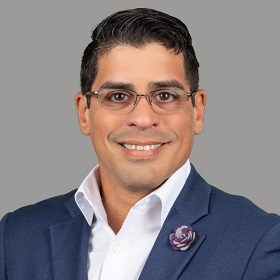Keynote Forum
Lia Hunter
Cambridge University United KingdomTitle: The Title Gene Therapy the era of the Hematopoetic stem cell
Abstract:
The Title Gene Therapy the era of the hematopoetic stem cell
Since the knowledge of DNA was established, scientists have been working on ways to alter genetic material in order to prevent, treat, or cure medical conditions. Despite gene therapy still being fairly experimental in its applications, it has the potential to completely change the therapeutic industry and could stand as an alternative to drug administration or surgery. In recent years, a new era of gene therapy has arisen, involving hematopoiesis stem cells (HSC), also known as blood stem cells. These are immature cells located in the red bone marrow and peripheral blood. They have the unique ability to develop into all types of blood cells in a process called hematopoiesis In addition, HSCs are able to repeatedly renew themselves, allowing them to be grown in large numbers in the laboratory before being differentiated into specific tissue types. This intrinsic phenomenon is being used as an asset in treating inherited cancers of the blood or bone marrow via transplantation of grown tissues. There are different types of bone marrow/stem cell transplants. The 2 main types are: Autologous transplant (the Stem cells come from your own body) and Allogenic transplant (the Stem cells come from another person, called a donor). The donor's stem cells are given to the patient after the patient has chemotherapy and/or radiation therapy. For many rare diseases this is the only route of treatment available However, it is an aggressive procedure which can create significant short and longterm risks, as well as immune-mediated complications including fertility problems, early menopause, increased risk of developing infections, autoimmune conditions and cancer. HSC transplant using donor cells has the added complication/risk of rejection and subsequently graft vs host disease GvHD and death. As a result, scientists and pharmaceutical companies alike have been conducting clinical research trials to address the safety concerns yet make use of the unique properties of hematopoietic stem cells. Thus, the era of hematopoietic stem cell Gene Therapy has been birthed
Biography:
Lia Hunter she studied at Cambridge University and she became Director of Clinnovate Ltd/ CGX Training, which is located at UK
Speakers
Marcos A Sanchez-Gonzalez
Florida University United StatesTitle: Developing intranasal inhalation therapies for the treatment of inflammatory and infectious disease of the respiratory system Developing intranasal/inhalation therapies
Abstract:
Title : Developing Intranasal Inhalation therapies for the treatment of inflammatory and infectious disease of the respiratory system Developing intranasal/inhalation therapies for the treatment of inflammatory and infectious disorders of the pulmonary system Disorders affecting the respiratory system including allergies, asthma, and upper respiratory infections are a major course of morbidity and mortality in the US. For years it has been accepted that dysregulation of the nasal alternating turgescence of the inferior turbinates may lead to the development of respiratory disorders. Intranasal therapies seem to provide a great means to deliver treatments to regulate the nasal cycles as well as modulate the mucosal microbiome. In a from molecules to population fashion, the present seminar explores the development of intranasal therapies using candidate substances displaying, anti-inflammatory, antiviral, and microbiome modulating effects. The overarching goal of this research agenda is to develop effective interventions to improve the quality of life of those suffering from Pulmonary Disorders. To this end, a series of basic, translational, applied, and clinical studies have been designed to unveil the therapeutic properties of Xylitol, Chlorphenamine, and grapefruit seed extract from the successful management and treatment of both inflammatory and infectious disorders of the pulmonary system. At the end of the seminar, the audience will be able to: • Recite the importance of the nasal cycle and the nasal microbiome as they relate to pulmonary health • Recall the different phases of the therapeutic pipeline in the context of pulmonary disorders • Identify the therapeutic properties of Xylitol, Chlorphenamine, and grapefruit seed extract • Construct a roadmap of the development of intranasal/inhalation therapies for the treatment of pulmonary disorders.
Biography:
Marcos A. Sanchez-Gonzalez, MD, PhD, He run his own company and he is Chief Scientific Officer Company: Dr. Ferrer BioPhrama Mismi FL
Dattatreya Mukherjee
Jinan University, P.R China ChinaTitle: A Hybrid Survey on the Acceptance and Affordability of COVID 19 Vaccine among the People of Konnagar- Uttarpara Belt, West Bengal, India- A Survey Based Study
Abstract:
A Hybrid Survey on the Acceptance and Affordability of COVID 19 Vaccine among the People of Konnagar- Uttarpara Belt, West Bengal, India- A Survey Based Study
Overview: Currently, multiple vaccines for coronavirus disease 2019 (COVID-19) are in clinical trials and in the market. In Dec 2020 to Feb 2021, 1543 individuals in konnagar- Uttarpara belt, West Bengal surveyed to evaluate possible acceptance rates, affordability and factors affecting the acceptance of a vaccine for COVID-19.
Method of Study: Questionnaire is prepared, 1200 in physical format and also as the google form. The form is circulated physically and digitally among the people and then we have collected the data in excel. Based on the result we have prepared our statistical graphs.
Result
Physical Survey [n= 1100]: 94.4 percent of respondents reported that they would be very or very likely to take a vaccine for COVID-19, 4.8 percent don’t want to take vaccine and 0.8 don’t know about their decision. In that 91.2 percent respondents want to take Indian Vaccine; 2.2 percent respondents want to take foreign vaccine. Other respondents can take any vaccine. The affordability, majority needs a vaccine which cost less than 500 INR and it should be regulated by government.
Digital Survey [n=443]: Result 94.1 percent of respondents reported that they would be very or very likely to take a vaccine for COVID-19, 5.19 percent don’t want to take vaccine and 0.71 don’t know about their decision. In that 85 percent respondents want to take Indian Vaccine; 3.6 percent respondents want to take foreign vaccine. Other respondents can take any vaccine The affordability, majority needs a vaccine which cost less than 500 INR and it should be regulated by government.
Conclusion: Majority of Responders want a COVID 19 vaccine. Majority responders want Indian COVID19 Vaccine. Majority responders want a vaccine in a cost of below 500 INR.
Biography:
-
Dattatreya Mukherjee, he studied MBBS and worked as Research Assistant and Undergraduate research scholar
at Jinan University which is located at P.R China.



